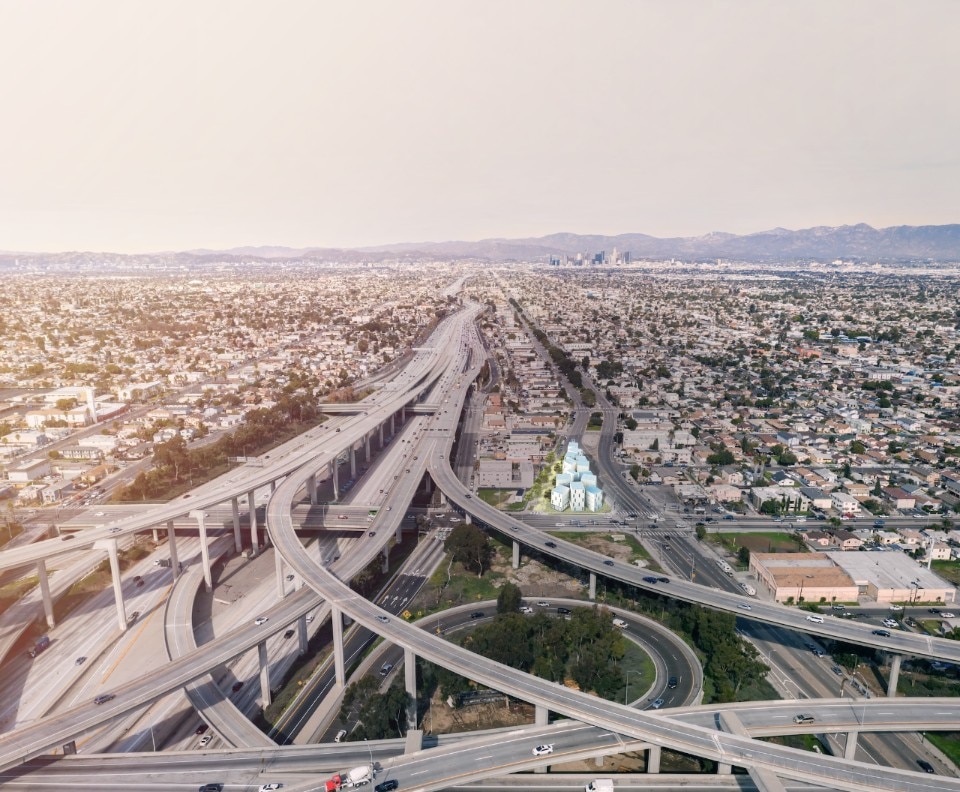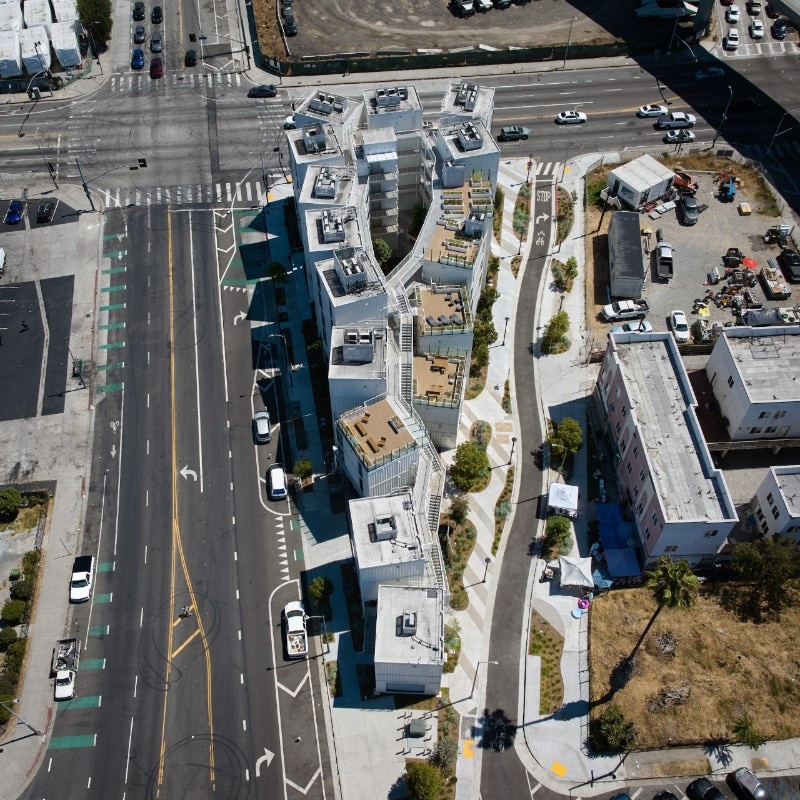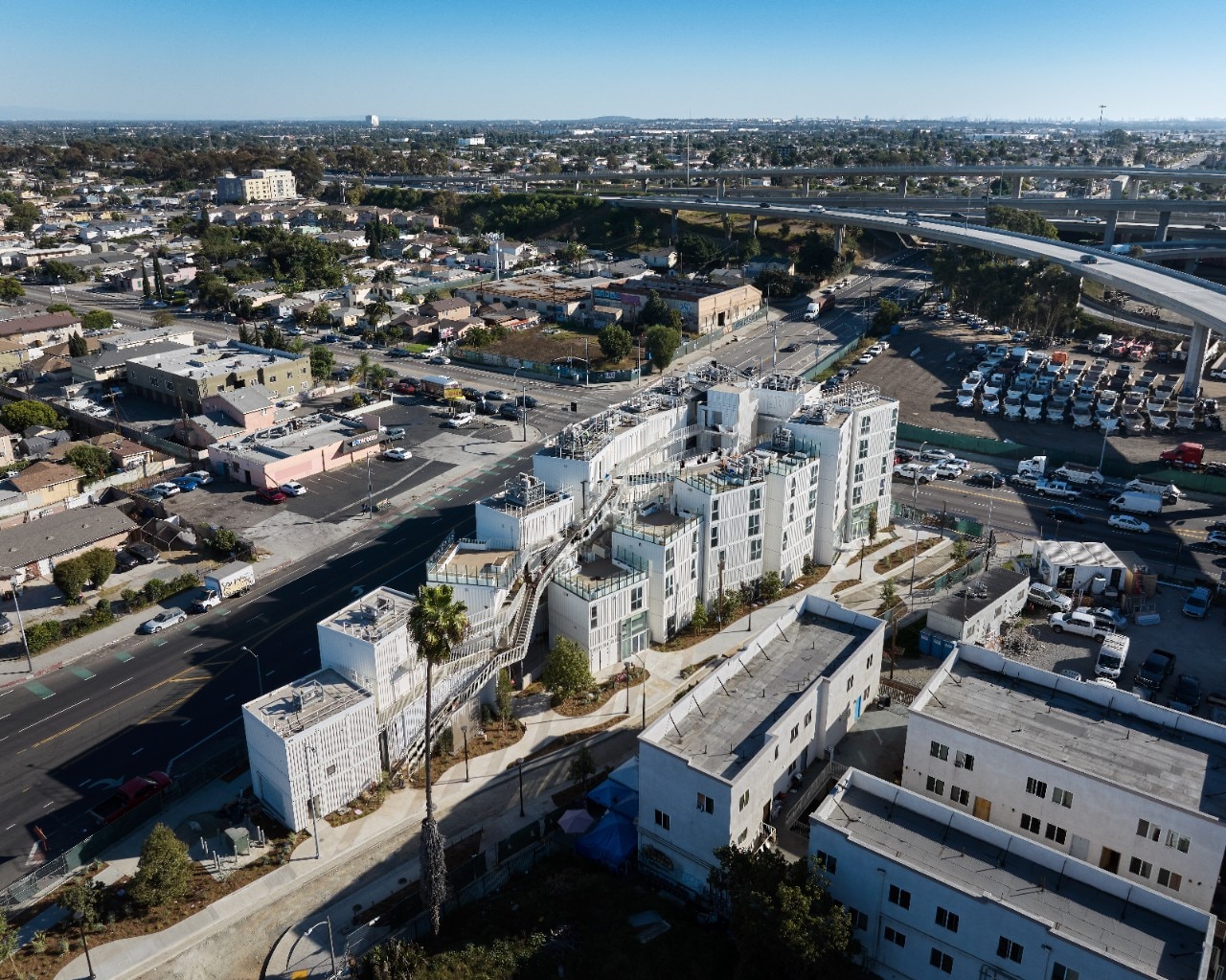In the urban landscape of Los Angeles, where the housing crisis and the scarcity of available space present crucial challenges, Loh Architects offers an innovative approach with the Isla Intersections project. Located on a 19,814-square-foot triangular lot, the complex houses 54 modular housing units, transforming a former traffic island and railroad yard into a housing hub.
The project comes as part of an initiative by the City of Los Angeles, which made more than 1,700 public lots available for affordable housing development in 2018. Many of these sites are located in difficult areas, along high-traffic arteries or near freeways. Isla Intersections addresses this very challenge, locating near the interchange between the 110 and 105 freeways, one of the most congested in the world.

The complex is laid out along Broadway Street in a sequence of 16 staggered volumes, each consisting of three modular recycled steel containers welded together to make 480-square-foot units. The accommodations-compact and efficient-include an accessible kitchen, bathroom, living room and bedroom. The towers that house them are connected by walkways and distributed around the perimeter of the lot, creating indoor green spaces that serve as common areas and urban micro-parks.
A key element of the project is spatial permeability: the gradual change in the height of the buildings, which drop from five to two stories as they approach the residential neighborhood, reinforces the connection with the urban context. The paseo, designed as a “slow space” for pedestrians and bicyclists, creates a filter between the complex and the highway interchange, mitigating the impact of traffic and fostering sociability. The ground floor will house commercial spaces, areas for start-up incubation, vocational training and services for residents.

The focus on sustainability is also reflected in the landscape: trees, shrubs and creepers have been selected for their ability to absorb air pollutants. Rooftops, on the other hand, will accommodate urban gardens and farms, strengthening the link between community and accessible food.
The project is part of a broader network of initiatives to reclaim urban space for housing and social purposes, such as the nearby Stanford Avalon Community Garden, an urban farm that grew out of residents' battle to preserve cultivation in brownfields.






















